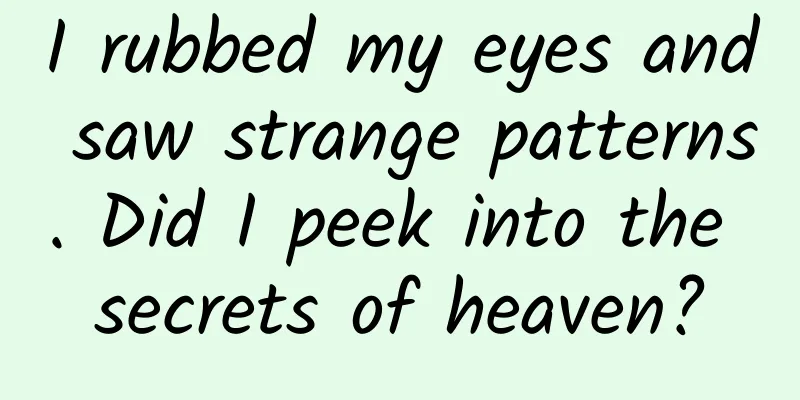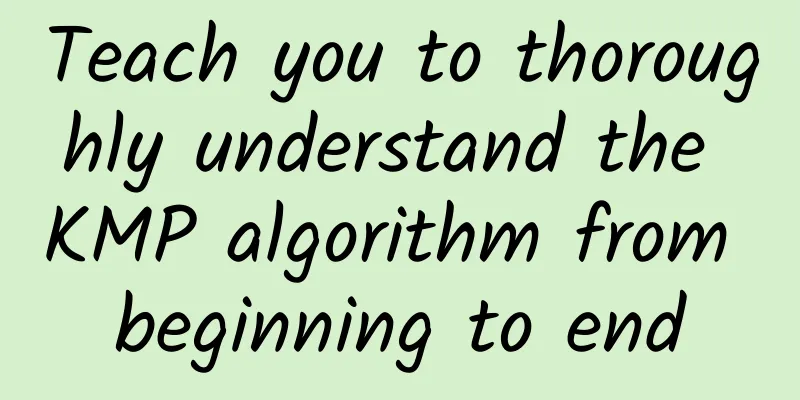I rubbed my eyes and saw strange patterns. Did I peek into the secrets of heaven?

|
After using our eyes for a long time, our eyes will feel tired. At this time, many people will involuntarily close their eyes and rub them to relax. But have you ever noticed that when we rub our eyes excessively, some strange patterns often appear dancing in front of our eyes! What is going on? Could it be that we have discovered some secret? What are phosphenes? The strange patterns you see when you rub your eyes can change and move randomly and uncontrollably. This phenomenon is medically known as phosphenes. That is, it is a subjective feeling of light or color that we have when no light enters the eye. There are many forms of phosphenes, among which the most common one is the pressure phosphene caused by applying pressure to the eyeball with eyes closed. In addition, motion phosphenes can also occur when our head is physically impacted, which is what we often call "stars in the eyes". So it seems that phosphenes do often appear in our lives, so what are the scientific principles behind them? The reason why we can see objects is that when light enters our eyes, it stimulates the neurons on the retina that are responsible for receiving visual information from photoreceptor cells. The received signals are converted into "electronic pulses" and then undergo complex processing in the brain to form the image we see. Schematic diagram of a cross-section of the human eye. Source: Guangzhou Science and Technology Popularization Center You may be wondering what this has to do with rubbing your eyes. Because retinal cells cannot distinguish between the types of stimuli, applying pressure can also send them some false signals, "tricking" them into "waking up" in a similar way to light activation. When we rub our eyes, we create a certain amount of pressure on the cells in the retina, making them think that light is coming, so those strange patterns appear in front of our eyes. Are phosphenes harmful to the body? Don't be nervous, phosphenes are harmless to our body. Rubbing your eyes isn't the only way to experience phosphenes. Sometimes phosphenes occur after we forcefully open our eyes, and strange patterns appear on objects in front of us (e.g., walls, tables, etc.); Phosphenes can also occur when we sneeze or cough violently. Although the eyeball is not directly stimulated, the indirect pressure on the eyeball can cause ischemia of the retinal blood vessels for a short period of time, thereby stimulating the visual cortex of the brain and causing phosphenes. In addition, phosphenes can also occur during migraines. Although scientists are still unable to fully determine what causes phosphenes during migraines, it is very likely caused by local abnormal discharges of brain electrical activity, which is also a warning for our health. At present, phosphenes have no special meaning for people with normal vision, but for blind patients, they may give them hope of regaining their vision. Scientists have found that by stimulating the visual center of the brain with electrodes, it is possible to generate spots of light at specific locations in the visual space, allowing the subjects to see an understandable image composed of multiple light rings, such as different letters. Artificially creating light hallucinations may really bring hope to blind patients. Here we would like to remind everyone (especially children) that although phosphenes are a wonderful experience and are not harmful to our bodies, if we rub our eyes for a long time, the various bacteria on our hands may take advantage of the opportunity to enter and become the culprit of eye damage. What other "false signals" have we seen? Phosphenes are just one of the false signals that our body can send, and there's evidence behind these "fake news." For example, looking at the sun or other light source can help us sneeze more smoothly. This phenomenon of strong light causing sneezing is called the "optical sneeze reflex." Because the cranial nerve responsible for sneezing is connected to the optic nerve, when the eyes are stimulated by strong sunlight, our nasal mucosa will also be over-stimulated, making sneezing easier. Have you ever been squatting on the toilet for a long time and felt your legs go numb and tingling when you stood up? This is because, when a part of our body is under pressure for a long time, the blood supply to specific nerves is poor, which will cause obstacles in the communication between the nerves and the brain. Not only will the information transmitted by the peripheral nerves to the brain be interfered with, but the instructions sent by the brain to the peripheral nerves will also fail to reach them completely. The brain cannot perceive the state of the compressed part and will send out stronger signals. Then, when the pressure is released, we will naturally feel a tingling sensation similar to that of a needle prick. Therefore, we must never underestimate our bodies, as they hide many little secrets. END Review expert: Liu Dongbao, chief physician of ophthalmology, Shenyang Red Cross Hospital. Tadpole Musical Notation original article, please indicate the source when reprinting Editor/Xiao Xitushuo |
<<: 500 million scrapped and 2 billion in stock, where do the old mobile phones go?
Recommend
Interesting story | What is the relationship between Cao Cao’s migraine and stroke?
Cao Cao was a famous politician, military strateg...
Taobao no-source model overseas orders, single store monthly profit 10000+
Taobao no-source model overseas orders, single st...
Talk from 8 perspectives: Channel delivery methods based on user journey
The user journey refers to the entire process of ...
The most comprehensive mind map: How to trigger user growth?
In fact, user growth systems are very common in o...
Smart bra tops the list? Check out these useful smart products
Since the concept of smart hardware became popular...
When traveling long distances, beware of "economy class syndrome"!
Author: Kan Shifeng, deputy chief physician, Firs...
The mass of the Earth is about 600 trillion tons, so can we calculate the mass of larger and more distant stars?
The mass of the Earth is 5.965x10∧24 kilograms, w...
Can eating garlic, tomatoes and black fungus help fight cancer? You may be overthinking...
Rumor : "Certain food ingredients can fight ...
The development of autonomous driving is accelerating, and test cars will be on the highway next year
At the end of 2017, Beijing was the first city to...
How to write the application for unblocking Tieba and the reasons for appealing Tieba?
I haven't used Tieba for a long time. I remem...
Do you understand these permissions in iOS development?
Preface App development should avoid the problem ...
The evolution and thinking of Taobao Native R&D model
The origin and development of DX DX was hatched f...
Electric vehicle fires are not a technical issue, quality control and design are the key
This year, there have been more than 50 fires in ...
Investment and Financing Analyst Training Class (Level-I) CIFA System Course
Investment and Financing Analyst Training Class (...









